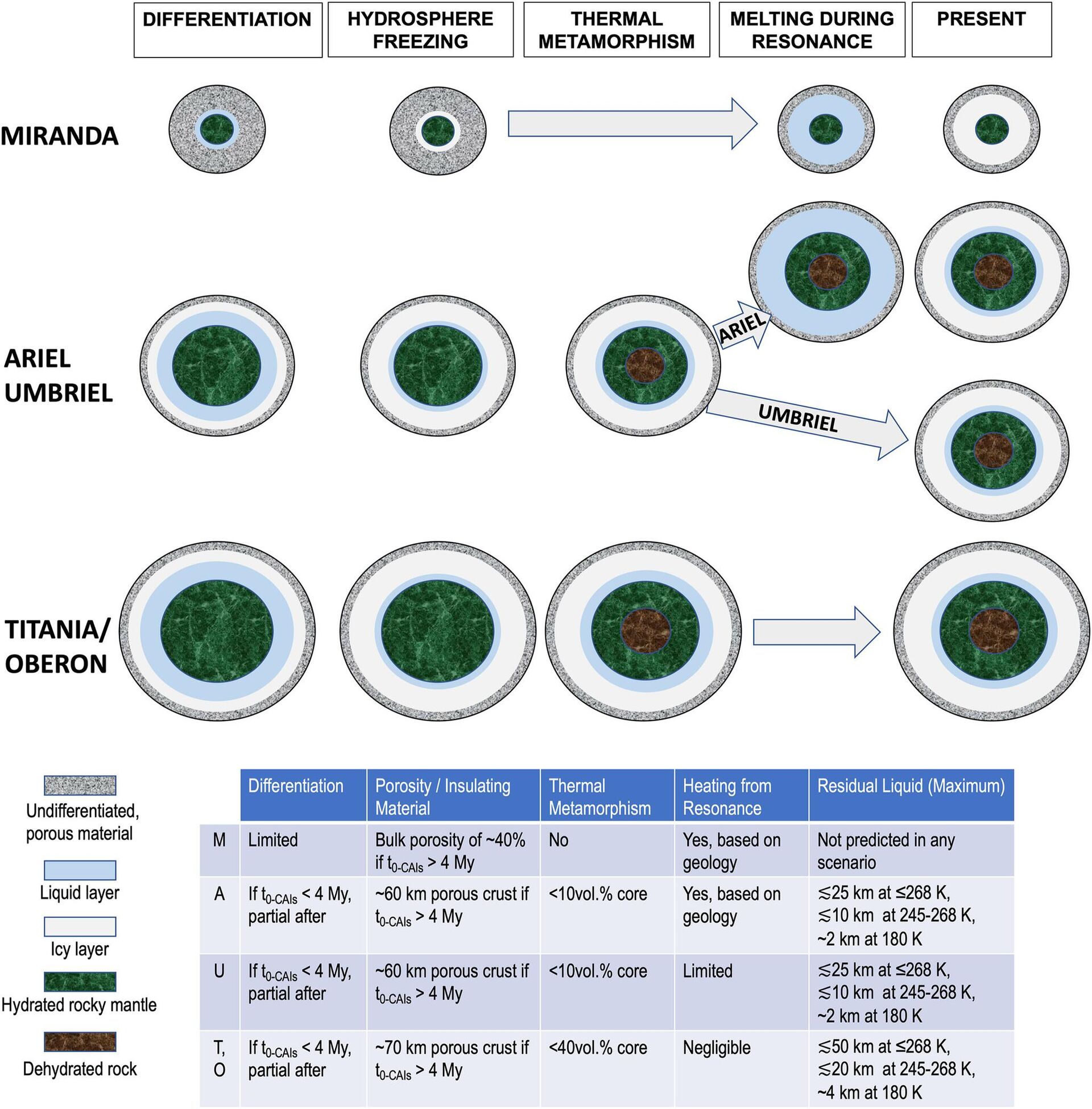Uranus Moons Have Subsurface Oceans, Study Says
21:48 GMT 07.05.2023 (Updated: 17:11 GMT 20.06.2023)
Subscribe
Planetary scientists have re-analysed observational data from the four major satellites of Uranus and concluded that they may have residual subsurface oceans. Oceans on Ariel, Umbriel, Titania and Oberon may be less than 30-50 kilometres thick, be hypersaline and contain ammonia.
A team of planetologists led by Julie Castillo-Rogez at NASA's Jet Propulsion Laboratory has decided to revise current theoretical assumptions about the composition and structure of Uranus' large satellites. The scientists reanalysed data from Voyager 2 and ground-based telescopes, and also took into account data from the Galileo, Cassini, Dawn and New Horizons spacecraft on other icy solar system bodies as they built computer models of the satellites and their evolution.
Researchers previously assumed only Titania was large enough to retain internal heat, primarily due to radioactive decay. But the new study used computer modeling to determine the porosity of the other Uranian moons' surfaces, and determined they are likely insulated enough to retain the heat required to maintain liquid water.
"Our work could inform how a future mission might investigate the moons, but the paper also has implications that go beyond Uranus," said Dr. Julie Castillo-Rogez, a researcher at NASA’s Jet Propulsion Laboratory. "When it comes to small bodies — dwarf planets and moons — planetary scientists previously have found evidence of oceans in several unlikely places... So there are mechanisms at play that we don’t fully understand. This paper investigates what those could be and how they are relevant to the many bodies in the solar system..."
These satellites of Uranus are believed to be more likely to contain residual oceans than the global oceans, with thicknesses of less than 30 kilometres on Ariel and Umbriel and less than 50 kilometres on Titania and Oberon.
Satellite Miranda is unlikely to currently contain liquid unless it experienced a tidal heating episode tens of millions of years ago.

Stages of evolution and projected outcomes for the Uranian moons and prospects for liquid preservation in these bodies.
If the residual oceans are composed of a water-based hypersaline liquid, their induced magnetic fields can be detected by a space probe magnetometer. However, if the oceans are not frozen, mainly due to ammonia, their temperature may be well below the freezing point of water and their electrical conductivity may be too low to be detected by a spacecraft.
The potential habitability of these oceans is still poorly understood, but it is possible that some micro-organisms may still be able to survive in such environments.
The study findings were published in the Journal of Geophysical Research: Planets.
Uranus and its satellites remain one of the least explored planetary systems in the solar system - they have only been visited by the Voyager 2 robotic probe, all other observations are made by ground-based and near-Earth telescopes, with Uranus itself being the most common target.
The major and largest satellites of Uranus - Miranda, Ariel, Umbriel, Titania and Oberon - are interesting targets for the Uranus Orbiter, which is currently under development by NASA. They are made up of rocks and frozen volatiles, but little is known about the inner workings of the satellites.
"Of course, there still are a lot of questions about the large moons of Uranus," Dr. Castillo-Rogez said. "There is plenty more work to be done. We need to develop new models for different assumptions on the origin of the moons in order to guide planning for future observations."



